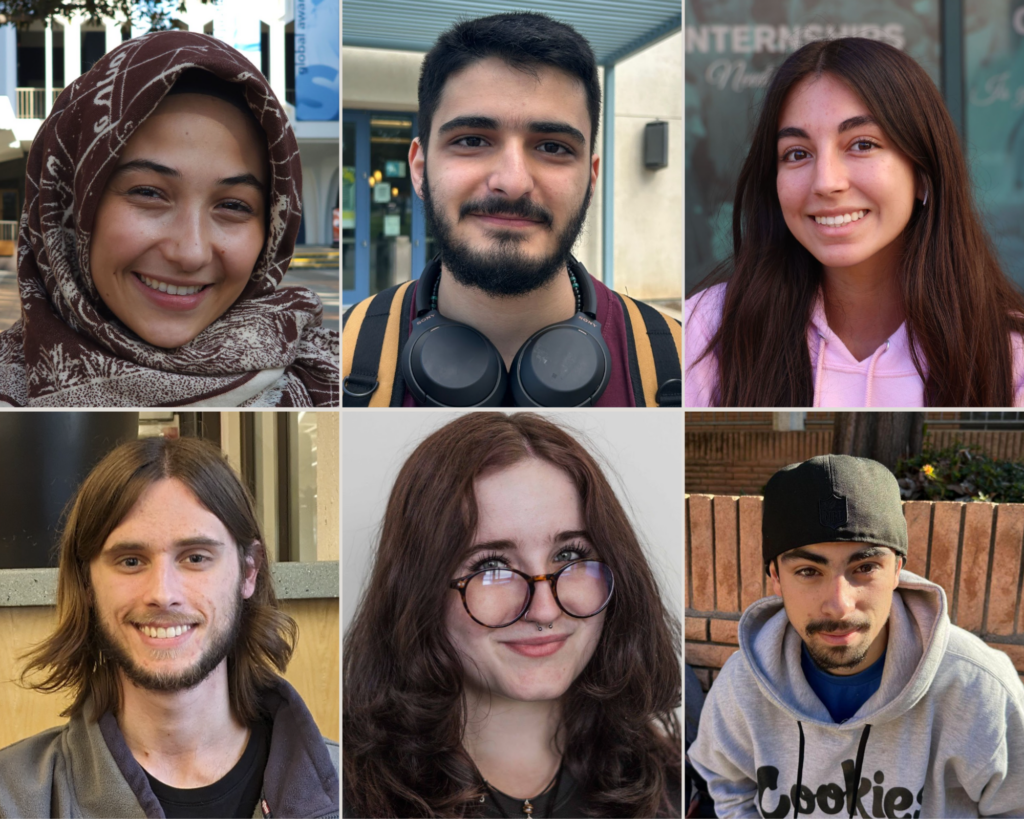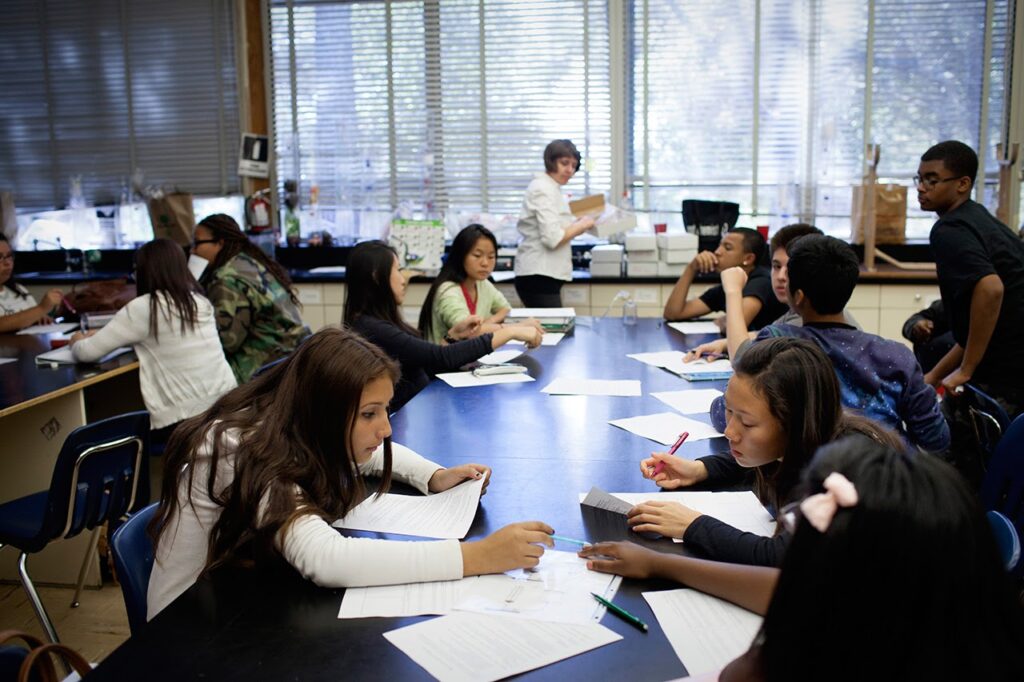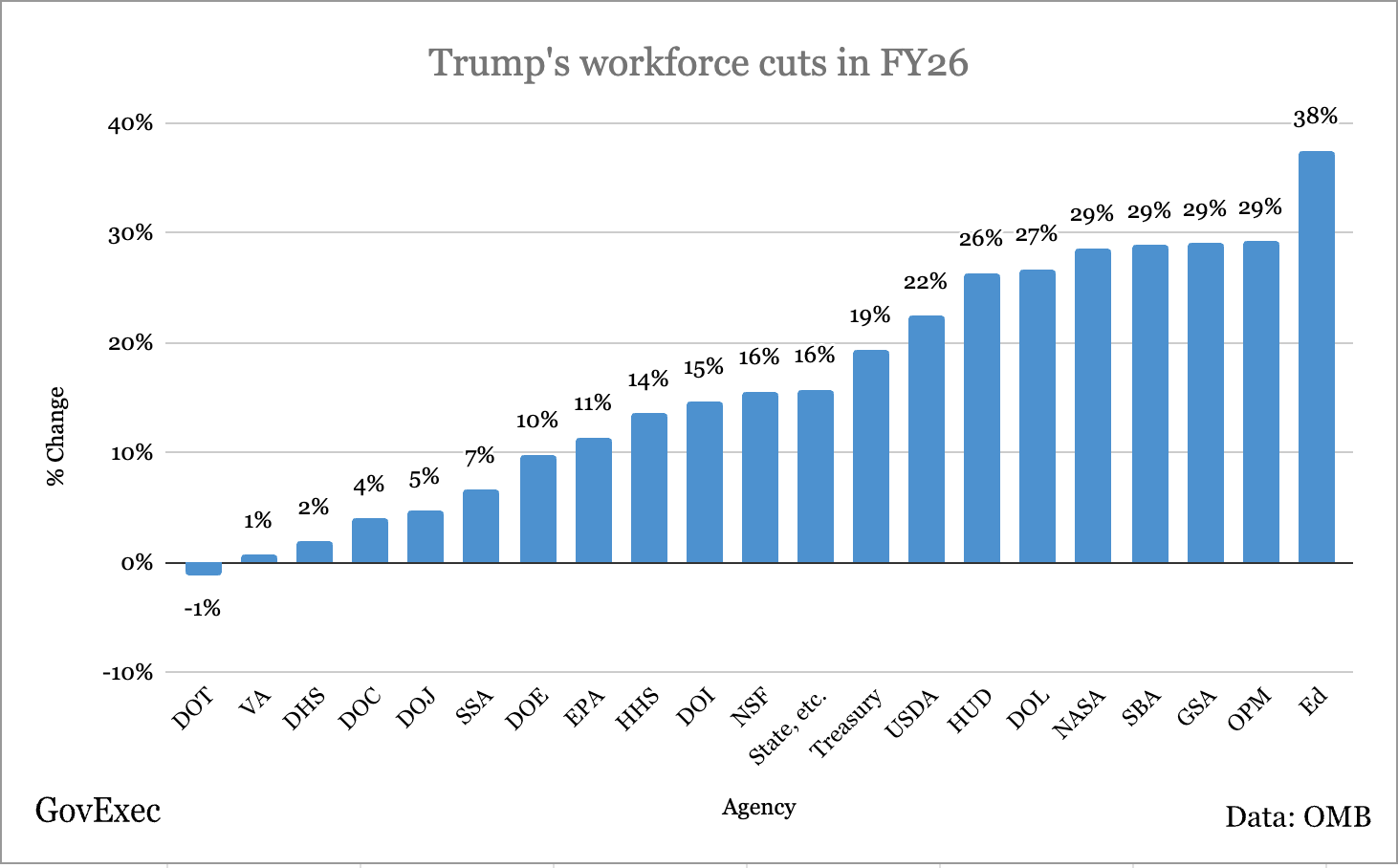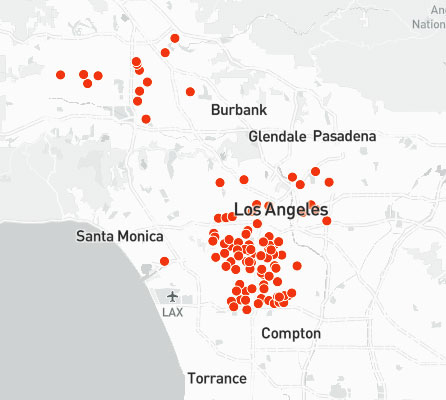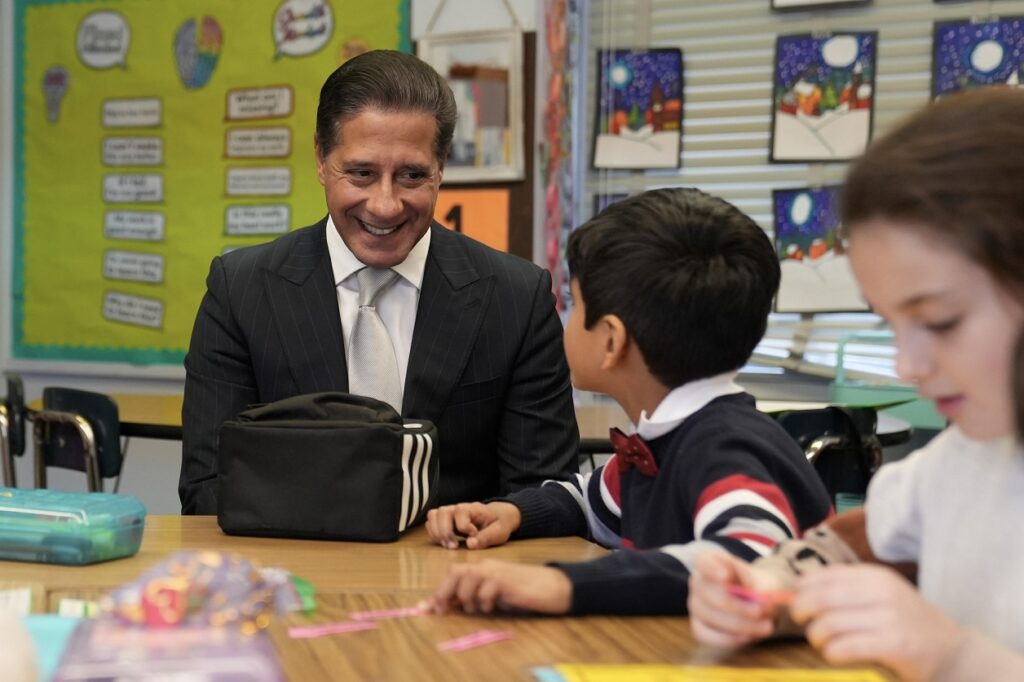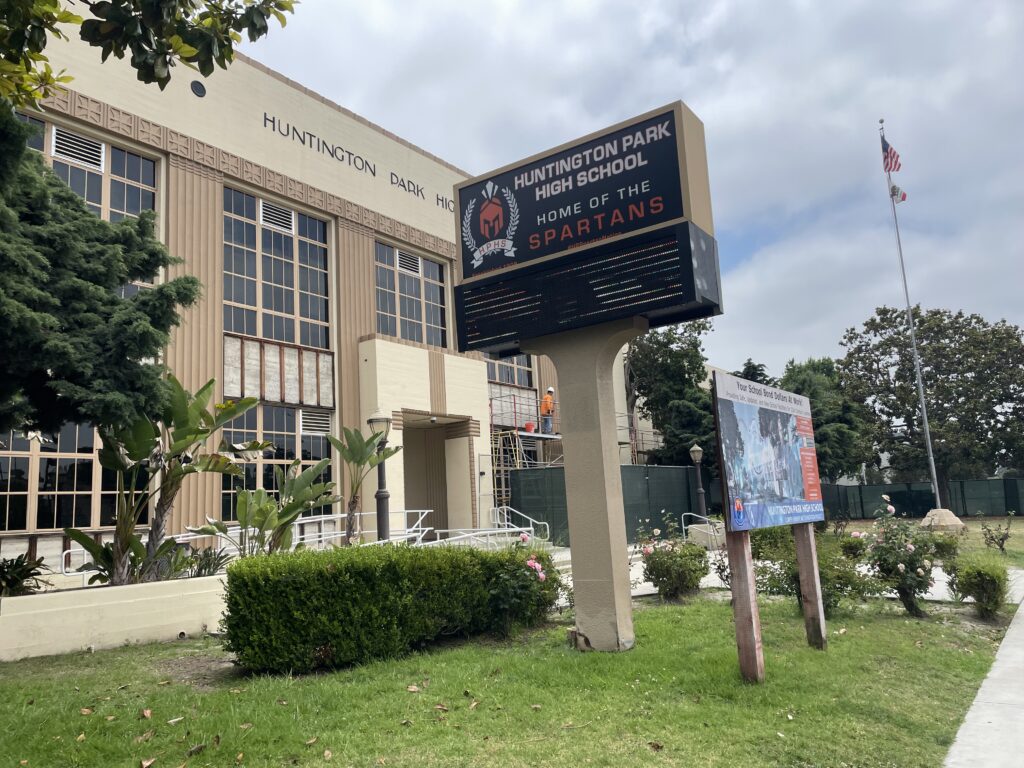
Credit: Alison Yin / EdSource (2017)
Parents of young kids starting to learn to read in California should consider moving to Mississippi. No doubt, this advice is jarring. Decades ago, Southern families migrated to California in search of better opportunities. Mississippi’s child poverty rate today is nearly twice that of California.
Yet, when it comes to teaching children to read, Mississippi is a bright spot, one of three states whose gains in reading achievement put their schools ahead of where they were before the pandemic. California is one of ten states where reading scores continue to fall.

Data shown above from Stanford and Harvard universities’ Education Recovery Scorecard reveals the stark contrast. Mississippi’s students were below California’s in 2016, and half a year behind the national average in reading. Mississippi made steady progress until 2019, but both states suffered similar-sized learning losses during the pandemic.
Their paths to recovery have diverged sharply: Mississippi students now read above average while California students are worse off than those in 2016. A student in Jackson now reads a quarter of a school year ahead of a similar student in Sacramento. This is the result not of a short-term fix but from a decade of intensive focus on reading throughout the state.
California policymakers may be angered by the comparison, but they can’t ignore or dismiss the data. There are three things they could learn from Mississippi’s progress:
First, Mississippi’s leaders, from governors to district superintendents, have articulated a common mission to improve reading achievement. A decade ago, Mississippi Gov. Phil Bryant set a reading improvement goal for the state, in support of legislation passed by his predecessor. Then in 2015, he said, “If we confront dyslexia aggressively, we can see a dramatic decrease in our state’s dropout rate and help turn around our reading scores.”
California Gov. Gavin Newsom, who has dyslexia, has not mentioned reading once in his State of the State speeches, nor did his predecessor Jerry Brown. To be fair, Newsom has talked about reading in his budget remarks, and the state has approved a new screening tool for dyslexia, but leaders across California lack a common goal to improve reading.
Second, Mississippi has placed reading curriculum at the center of its reform efforts. Like California, Mississippi has an approved textbook list, with the difference being that the choices in Mississippi are all highly rated for alignment to college and career-ready standards by EdReports. One of those curricula, Wit and Wisdom, is also well-regarded for its knowledge-building features. Students read whole texts of fiction and non-fiction that showcase diverse perspectives and topics.
California last released a textbook adoption list in 2015. Districts aren’t required to pick from California’s current list, nor does the state keep track of which curricula are being used. The California Reading Coalition has carried out the most comprehensive review to date and finds that one of the more popular series used in California districts is poorly rated and negatively correlated with student achievement.
In the last nine years, publishers have created high-quality English language arts curricula that are well aligned with college-ready standards. Now, there are also well-regarded curricula such as Bookworms and EL Education, whose publisher has made them openly accessible to districts and schools. This helps districts save on costs and frees up resources to support teachers’ implementation.
Third, Mississippi has worked to strengthen the professional expertise of teachers.
Mississippi added literacy coaches in its 75 lowest-performing schools to help teachers learn how to implement new curriculum and offer feedback to improve instruction. California added the exact same number as part of the settlement in the civil rights lawsuit. Research from Stanford found the coaches had a positive effect on early reading achievement. But California’s coaches only reached 1% of schools. If the policy had operated at the same scale as Mississippi’s, the state would have added 800 coaches, not 75.
Historically, most university teacher preparation programs have had a high amount of autonomy, with tenured faculty highly resistant to change. Mississippi redesigned its teacher prep program requirements so universities must offer three common courses for all aspiring early literacy teachers. Last year, the National Council of Teacher Quality gave high ratings to two-thirds of Mississippi’s nine colleges training teachers, as their courses now address all five components of scientifically based reading instruction. In California, 60% of university programs scored an “F” for not addressing any of the five components.
California has taken some important steps on teaching quality. It has created a new PK-3 teaching credential based on new literacy standards and is developing a performance-based reading licensure test for new teachers. But a world of minimal oversight of teacher preparation programs, which are allowed to teach anything they want, fails to ensure all students have expert teachers.
Some policymakers and journalists dismiss Mississippi’s progress because the state has a third-grade promotion gate. Students have three attempts to pass the state test but are retained a year if they score below the state’s threshold. But those students don’t receive more of the same the next year. Instead, they are provided with an extra 90 minutes a day of intensive reading instruction, an individualized plan, and are guaranteed a high-quality teacher. A recent Boston University study found that students who repeated third grade scored higher on the state reading exams by sixth grade than fellow students who barely passed the third-grade test.
Assembly Bill 2222, recently proposed by Assemblymember Blanca Rubio, would initiate important changes in how reading is taught in California. A new textbook cycle would adhere to research-based methods for teaching reading. All current teachers, specialists and literacy coaches would have nearly a week of training to bring them up to speed on the latest research-based teaching. Most importantly, the bill borrows ideas from Colorado — a state whose policies are also rated highly by the National Council on Teacher Quality — on how to strengthen accountability for teacher prep programs that have not taught effective reading strategies.
Some policymakers have expressed concern that the proposed legislation infringes on local control of schools. Look at where local control has gotten California: only 43% of third graders read proficiently, while other states taking a stronger role show dynamic growth. It’s worth remembering that the responsibility for ensuring educational equity and excellence resides not in the Covina Valley or Chula Vista school districts but in California’s state constitution and the plenary power of the Legislature.
•••
David Scarlett Wakelyn is a consultant at Upswing Labs, a nonprofit that works with school districts and charter schools to improve instruction. He previously was on the team at the National Governors Association that developed Common Core State Standards.
The opinions expressed in this commentary represent those of the author. If you would like to submit a commentary, please review our guidelines and contact us.


